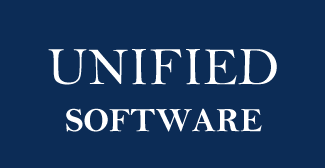1. Custom software is more cost effective in the long run:
At first, you may have to pay a considerable amount to design your own software, but in the long run, you end up saving a lot of money. By customizing your software, you avoid having to pay licensing fees associated with packaged software. You also won’t have to pay for built-in features that don’t apply to your company’s business and that you’ll never use. Another reason the custom software solution helps you save money is because it’s a long-term solution. Because it is specifically designed for your business, even as the years go by, you won’t have to replace it for a while, unlike off-the-shelf software.
2. Custom software increases productivity:
When you implement software specifically designed to meet your specific needs, it’s better to empower your employees and team to perform tasks more accurately and significantly faster. Instead of going back and forth through a clutter of complex and difficult-to-maneuver features in packaged systems that may not be relevant to the tasks at hand, everything is organized and in a single place. This fact alone improves your employees’ workflow and confidence in completing tasks.
3. Custom software lets your company grow and evolve on your terms:
When you use custom software, you and your software developer are in constant communication about your needs and wants. So if you ever need to make adjustments and improvements, you can talk directly to your developer and make the necessary changes. You won’t have to go through the long wait for a new version of software that doesn’t guarantee the availability of the features you need, as you would with an out-of-the-box solution.
4. Custom software can be designed to work well with other software:
You can design your software to be compatible with other applications, programs and system software already in action within your organization. This is a big difference from packaged solutions that come with limited compatibility capabilities that affect the overall operation of your business. When you choose to purchase custom software, you can streamline your processes and increase productivity within the business.
5. Custom software streamlines working with vendors:
By acquiring a custom software design, you open the door to a new way of interacting with your suppliers and contractors. An example of this would be by logging into a supplier-oriented portal where you will communicate and submit your orders to a single place. This portal will help you manage all transactions with your suppliers more easily.
6. Custom software provides a competitive advantage within the industry:
When you implement custom software into your daily operations, you can get everything you need to get the most out of your business. This customized tool gives your company the opportunity to perform at its best, leading you to offer more value to your customers. Your customers will be more satisfied with your service and will distinguish you from your competitors. In addition to this, when you purchase your own custom software, your solution will have capabilities that your competitors will not have, which will make you stand out in the industry in terms of the services you will now be able to offer. No matter what type of organization you are managing, custom software will help you stand out, as you will be able to focus specifically on all aspects of your organization to achieve growth and effectiveness.
7. Custom software makes possible what is impossible with packaged solutions:
Most of the problems you face with off-the-shelf solutions can be easily fixed and adjusted using software designed from the ground up. In addition, if there is a specific feature you need but can’t find in any of the packaged solutions, you can easily add it to your custom software package. Think of it this way, anything and everything you want in your software solution can be designed for you by your experienced software developer. Just like there is no one human being exactly like another, your company has its own identity and is different from any other. So why choose one-size-fits-all software when you can easily reach the stars of ingenuity with a customized software solution? As we mentioned earlier, choosing custom software over off-the-shelf solutions opens up numerous opportunities for your company that would otherwise have been wasted.
















